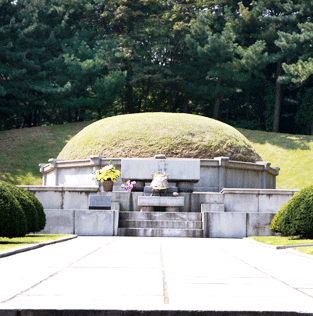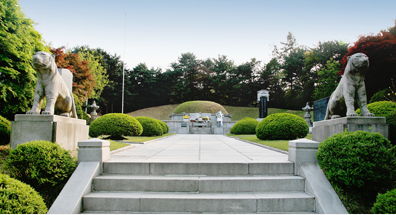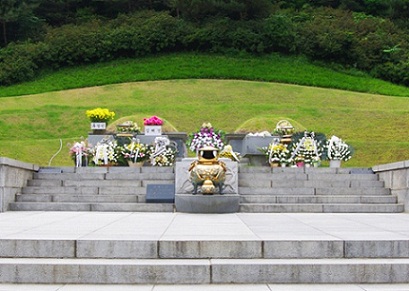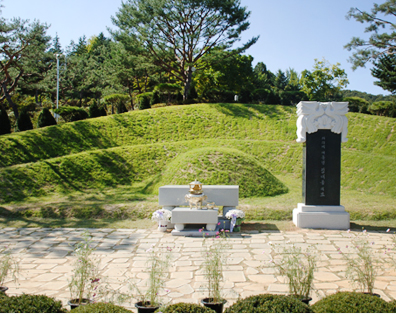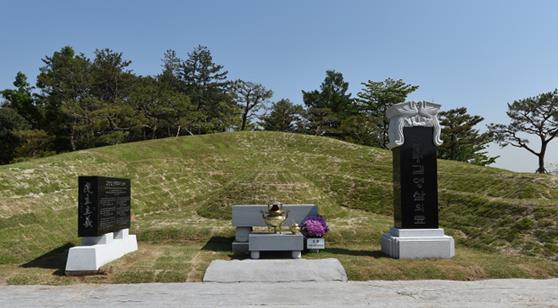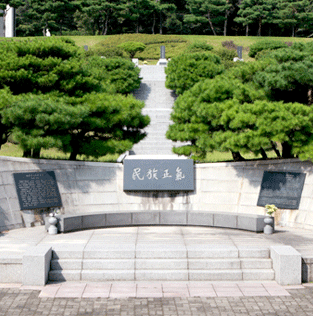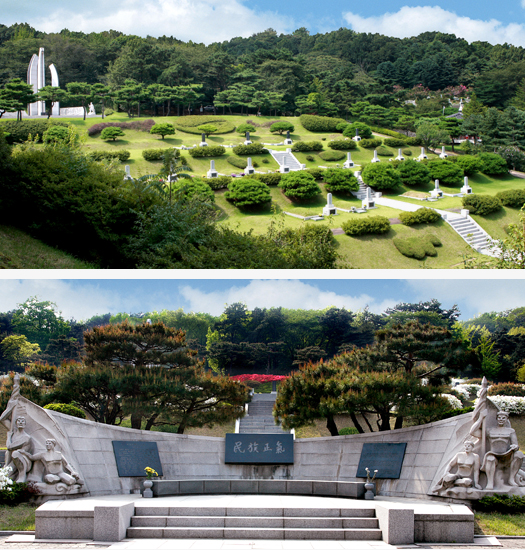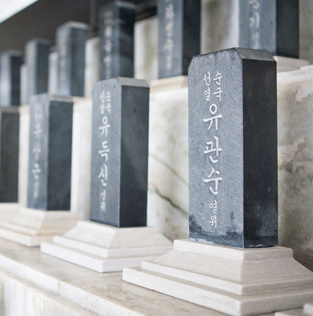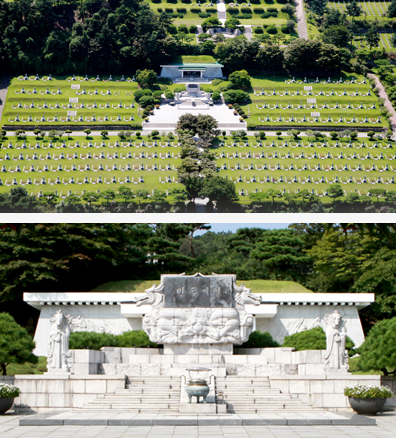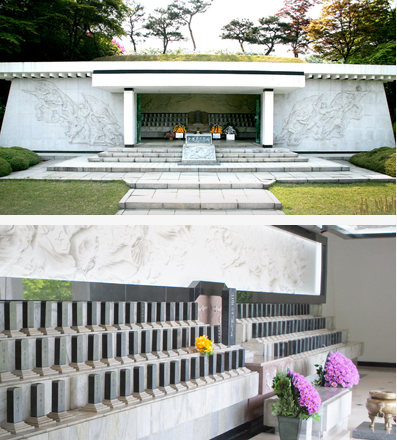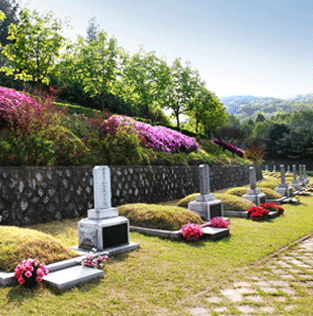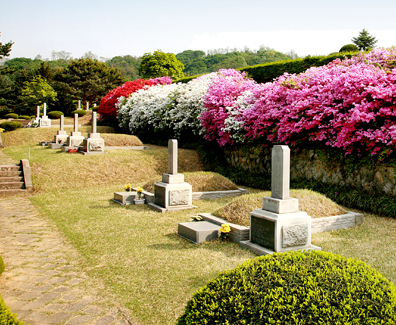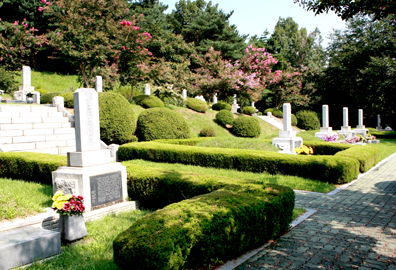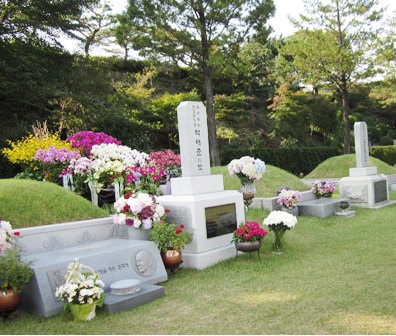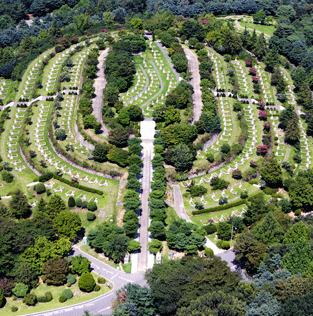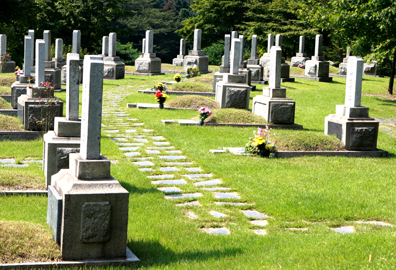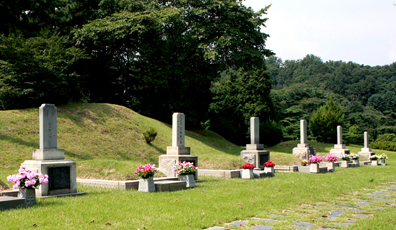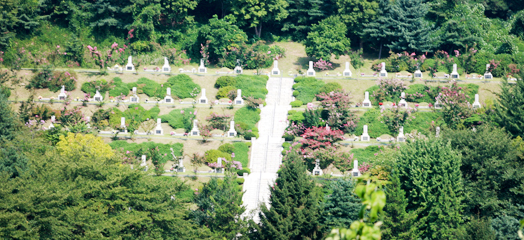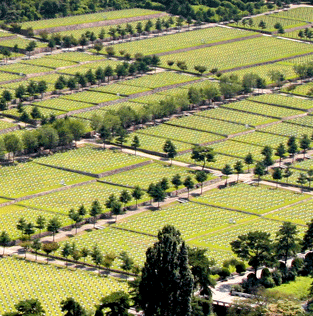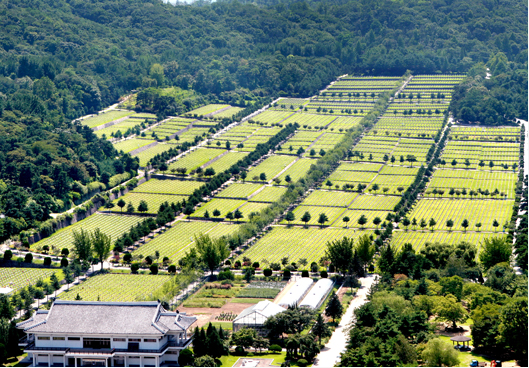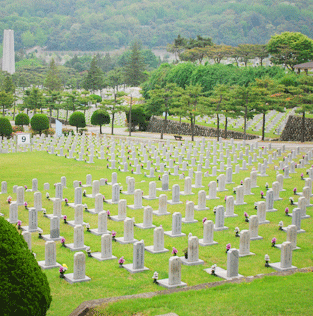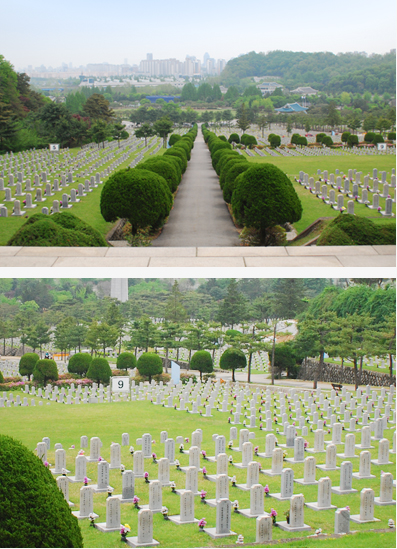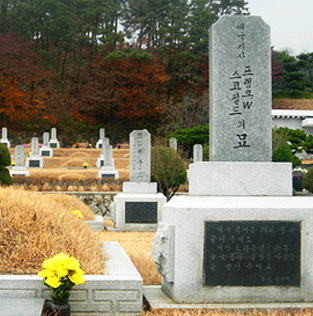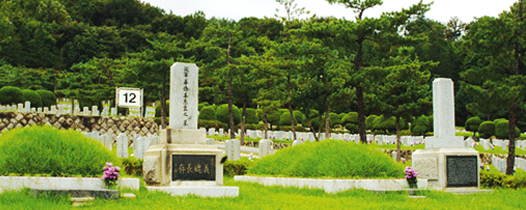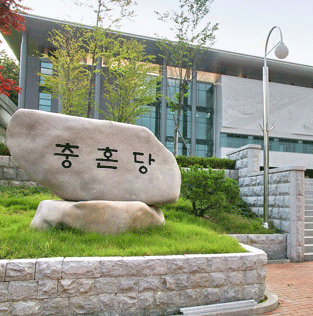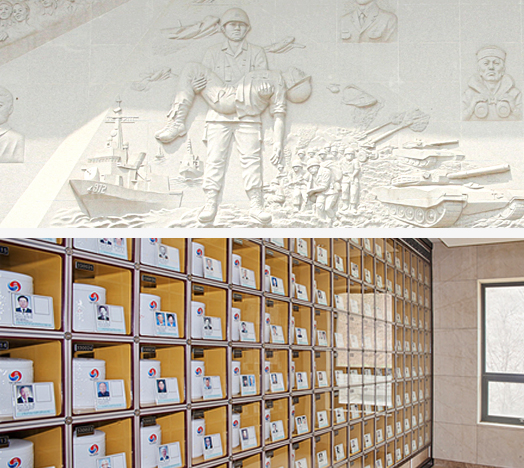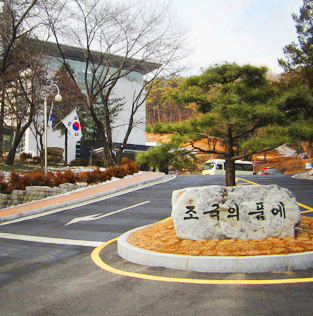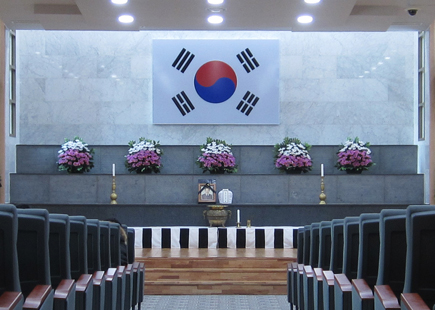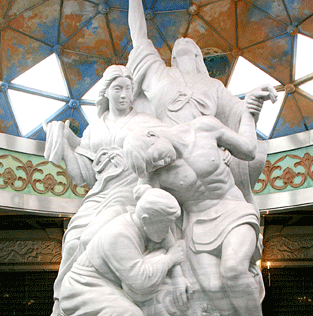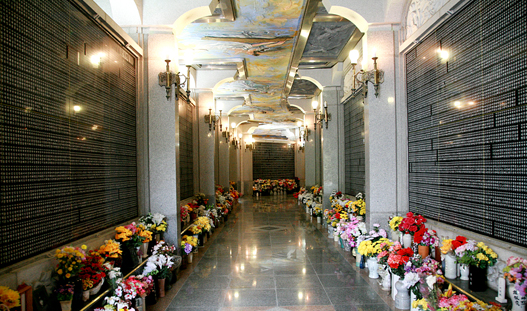The Graveyard for Casualties for War makes up of 53 graveyards; officers, soldiers, and civil workers in the military who were below colonel were buried here.
In fact, 56 graveyards are made but in the three(5th,8th,9th) of them, mostly police officers were buried so they separated as the Graveyard for Police Officers and only the other 53 graveyards are explained as the Graveyard for Casualties for War.
Most of them who were buried here are the men killed in battle of the suppression of armed communist guerrilla and North Korea partisans, Port Arthur before the Korean War, and the men killed in the battle of the Korean War and the Vietnam War.
192 remains were buried first including army staff sergeant Kang Duk-soo who was the first man buried in the 11th Graveyard on April 2, 1957.
In this Graveyard were buried White Horse trio who were the Korean war heroes, major Kang Jae-gu who saved his men and died on duty during the training for sending troops to the Vietnam war, captain Park Du-won who became a air force pilot from Student Volunteer Soldiers Resident in Japan, master sergeant Lee Won-deng who saved his men during the parachute training, captain Park In-cheol who was buried with his father, major Park Myeong-ryeol, together, a gravestone(second lieutenant Kim Soo-young) which was the only one without name among the gravestones, Baek Gwang-nam, the only Korean reporter, who died in the Vietnam war as a war correspondent, Kim Jae-hyun, a railroad engineer, who volunteered and died in a general William F. Dean who was the commander of the U.S. 24th Corps rescue operation during the Korean war, ten human bombs warriors and so on.
During the battle of White Horse Mountain, Iron Triangle Battlefield, the attack of the 1st company of 30th regiment was stopped by strong residence of communist Chinese army.
At that time Cpl Oh Gyu-bong carried anti-radiation guidance missile on his back and rushed to the enemy’s automatic firearms position to blow it up and platoon commander, second lieutenant Kang Seung-woo, and private first class Ahn Young-kwon gave him cover fire.
Second lieutenant Kang Seung-woo decided to attack on the pillbox with TNT and a mortar. Even as he crawled forward to the machine-gun nest by 7m and threw a bomb he got a shot on his right arm and dropped the bomb. However, private first class Ahn Young-kwon picked up the bomb quickly and threw it and Cpl Oh Gyu-bong also threw a hand grenade at the enemy’s machine-gun nest and destroyed it. This would be the start of recapturing the target by a company resuming the attack.
Their brave military sprits led to victory in the battle of White Horse, which recaptured and was recaptured over 25 times, and performed meritorious deeds. Second lieutenant Kang Seung-woo and private first class Ahn Young-kwon were enshrined with tablets in the Daejeon National Cemetery. Cpl Oh Gyu-bong was buried in the 13th Graveyard(No. 35317) in the Seoul National Cemetery.


